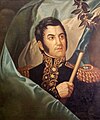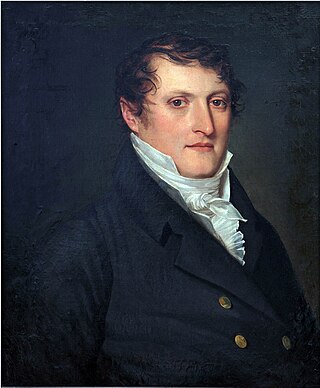
Manuel José Joaquín del Corazón de Jesús Belgrano y González, usually referred to as Manuel Belgrano, was an Argentine public servant, economist, lawyer, politician, journalist, and military leader. He took part in the Argentine Wars of Independence and designed what became the flag of Argentina. Argentines regard him as one of the main Founding Fathers of the country.
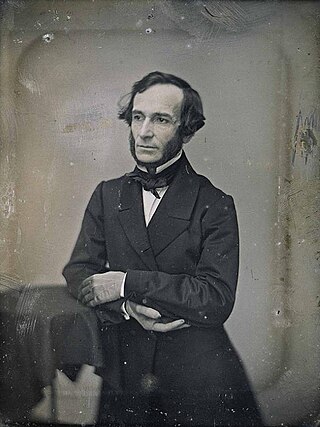
Juan Bautista Alberdi was an Argentine political theorist and diplomat. Although he lived most of his life in exile in Montevideo, Uruguay and in Chile, he influenced the content of the Constitution of Argentina of 1853.

The Argentine War of Independence was a secessionist civil war fought from 1810 to 1818 by Argentine patriotic forces under Manuel Belgrano, Juan José Castelli, Martin Miguel de Guemes and José de San Martín against royalist forces loyal to the Spanish crown. On July 9, 1816, an assembly met in San Miguel de Tucumán, declaring independence with provisions for a national constitution.

The Viceroyalty of the Río de la Plata meaning "River of the Silver", also called "Viceroyalty of the River Plate" in some scholarly writings, in southern South America, was the last to be organized and also the shortest-lived of the Viceroyalties of the Spanish Empire in the Americas. The name "Provincias del Río de la Plata" was formally adopted in 1810 during the Cortes of Cádiz to designate the Viceroyalty of the Río de la Plata.

The United Provinces of the Río de la Plata, earlier known as the United Provinces of South America, was a name adopted in 1816 by the Congress of Tucumán for the region of South America that declared independence in 1816, with the Sovereign Congress taking place in 1813, during the Argentine War of Independence (1810–1818) that began with the May Revolution in 1810. It originally comprised rebellious territories of the former Spanish Viceroyalty of the Río de la Plata dependencies and had Buenos Aires as its capital.
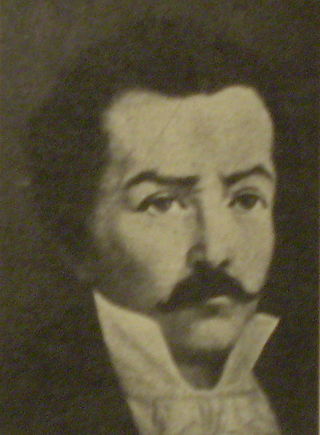
Francisco Narciso de Laprida was an Argentine lawyer and politician. He was a representative for San Juan at the Congress of Tucumán, and its president on July 9, 1816, when the Declaration of Independence of Argentina was declared.
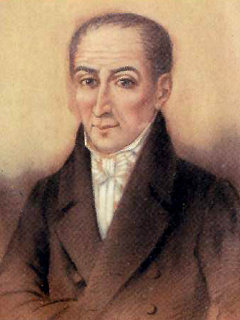
Juan José Esteban Paso, was an Argentine politician who participated in the events that started the Argentine War of Independence known as May Revolution of 1810.
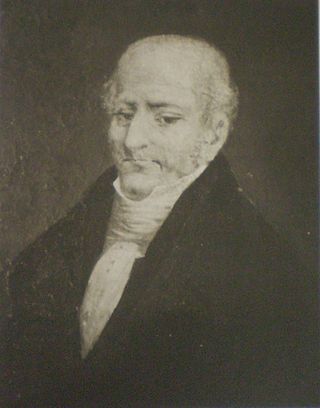
Pedro Medrano was a Uruguayan-born Argentine statesman and lawyer. He was a representative to the Congress of Tucumán which on 9 July 1816 declared the Independence of Argentina.
The Congress of Tucumán was the representative assembly, initially meeting in San Miguel de Tucumán, that declared the independence of the United Provinces of South America on July 9, 1816, from the Spanish Empire.

Tomás Manuel de Anchorena was an Argentine statesman and lawyer. He was a representative to the Congress of Tucumán which on 9 July 1816 declared the Independence of Argentina.
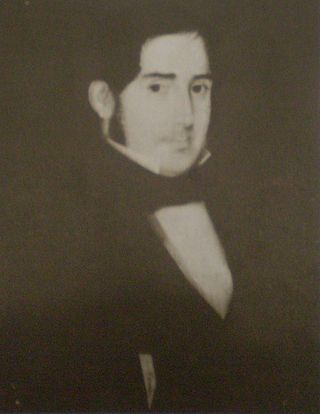
Esteban Agustín Gazcón was an Upper Peru-born Argentine statesman and lawyer. He was a representative to the Congress of Tucumán which on 9 July 1816 declared the Independence of Argentina.

José Severo Malabia was born in nowadays Bolivia. He was a statesman and lawyer based in Argentina. He was a representative to the Congress of Tucumán which on 9 July 1816 declared the Independence of Argentina.

Mariano Sánchez de Loria was a Bolivian-born statesman and lawyer. He was a representative to the Congress of Tucumán which on 9 July 1816 declared the Independence of Argentina.
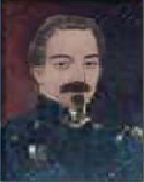
General José Ignacio de Gorriti was an Argentine statesman, soldier and lawyer. He was a representative to the Congress of Tucumán which on 9 July 1816 declared the Independence of Argentina.

The Federal League, also known as the League of the Free Peoples, was an alliance of provinces in what is now Uruguay, Argentina and Brazil that aimed to establish a confederal organization for the state that was emerging from the May Revolution in the war of independence against the Spanish Empire.

The Army of the North, contemporaneously called Army of Peru, was one of the armies deployed by the United Provinces of the Río de la Plata in the Spanish American wars of independence. Its objective was freeing the Argentine Northwest and the Upper Peru from the royalist troops of the Spanish Empire. It was headed by Hipólito Vieytes (1810), Juan José Castelli (1810–1811), Juan Martín de Pueyrredón (1811–1812), Manuel Belgrano (1812–1814), José de San Martín (1814), José Rondeau (1814–1816), Manuel Belgrano (1816–1819) and Francisco Fernández de la Cruz (1819–1820).

The Argentine Constitution of 1819 was a Constitution drafted by the Congress of Tucumán in 1819, shortly after the Argentine War of Independence. It was promoted by Buenos Aires but rejected by the other provinces and did not come into force.
The rise of the Argentine Republic was a process that took place in the first half of the 19th century in Argentina. The Republic has its origins on the territory of the Viceroyalty of the Río de la Plata, a colony of the Spanish Empire. The King of Spain appointed a viceroy to oversee the governance of the colony. The 1810 May Revolution staged a coup d'état and deposed the viceroy and, along with the Argentine war of independence, started a process of rupture with the Spanish monarchy with the creation of an independent republican state. All proposals to organize a local monarchy failed, and no local monarch was ever crowned.

Bernabé Aráoz was a governor of Tucumán Province in what is now Argentina during the early nineteenth century, and President of the short-lived Republic of Tucumán.

The Argentine Constitution of 1826 was a short-lived Constitution of Argentina drafted during the Argentine Civil Wars. Bernardino Rivadavia was appointed President of Argentina under this constitution. It was rejected by most Argentine provinces, and then abolished.























